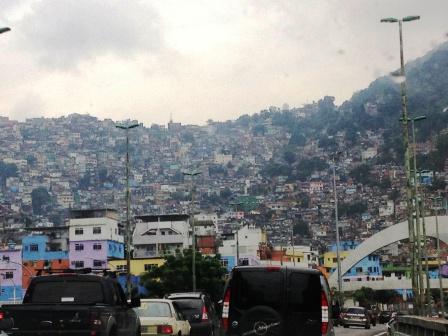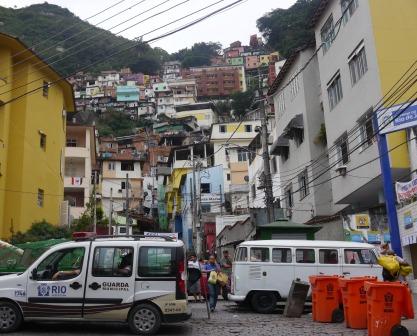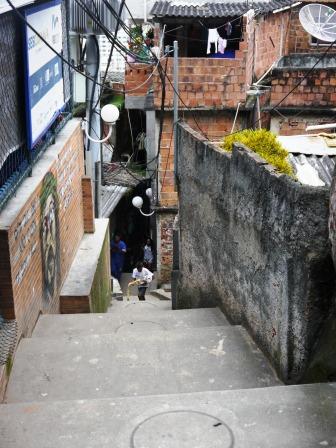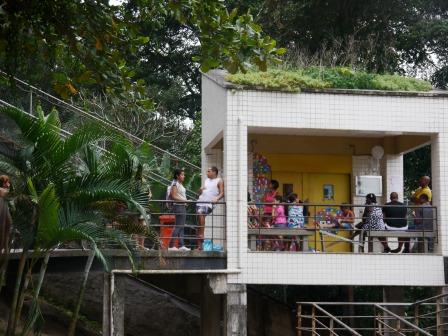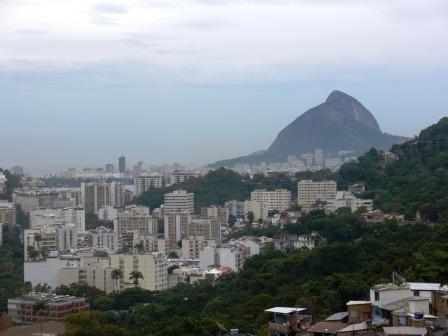Today I will take you on a tour through Rio de Janeiro’s infamous favelas. A favela is basically a slum in Brazil, commonly recognizable by hundreds of illegally constructed, brightly painted dwellings on the slope of a hillside. You can spot these favela from everywhere in the city, driving through a highway, from a posh residential area, or even from the statue of Cristo Redentor. There are 950 favelas in Rio and home to 20% of the population.
The first glimpse of the favela of Santa Marta is actually quite beautiful. It is a stark contrast to the modernized mega supermarket, busy roads with middle class motorists and college students dressed in designer jeans and t-shirts.
At Santa Marta, residents have a choice to climb the steep rows of staircases up the mountain, or take the free public tram installed by the local government of Rio. When you have loads to carry or make the trip home several times a day, this is your own feasible option.
On the other hand, the tram is extremely slow and you may need to wait for a while for the next one, where you may be in for a “sardine like” experience. The third leg of the tram is not operational (I hear it has never been since it was installed), so you would need to make that leg of the journey on foot.
Favelas are notorious for crime and poverty. It is said that the land the residents occupy is illegally owned; many collect rent for homes they don’t own; and sale of drugs is quite prevalent. Gun shots are also commonly heard around the favelas, but recently the cops in Rio have done well in preventing murders and open air shootings. It seemed to me, the cops had established base camps at the top and bottom of the hill, monitory all corners of the neighborhood.
On the other hand, some of the best views in Rio can be seen from the favela of Santa Marta. On one side, you will see Christ overlooking the entire area as if giving his blessing to the community. On the other, you have a 360 view of Rio’s skyscrapers, beautiful blue ocean, hills covered with trees, and everything in between.
When you visit a favela, you have to keep in mind you are in a residential slum, not a tourist attraction. There are narrow dark alleys with one room homes adjacent to each other where people carry on with their normal lives. While electricity and cable are somehow transmitted in, sewage systems are still not in place. Apparently, the local government has put in many programs for garbage disposal, education and daycare. The Samba schools at the favelas are also famous for generating world class dancers who perform at the Carnivals.
Guides offer organized tours of the favela for approx $40 per person. It is highly recommended that you don’t visit the favela on your own. Take a guide or go with someone who is familiar with the area.
